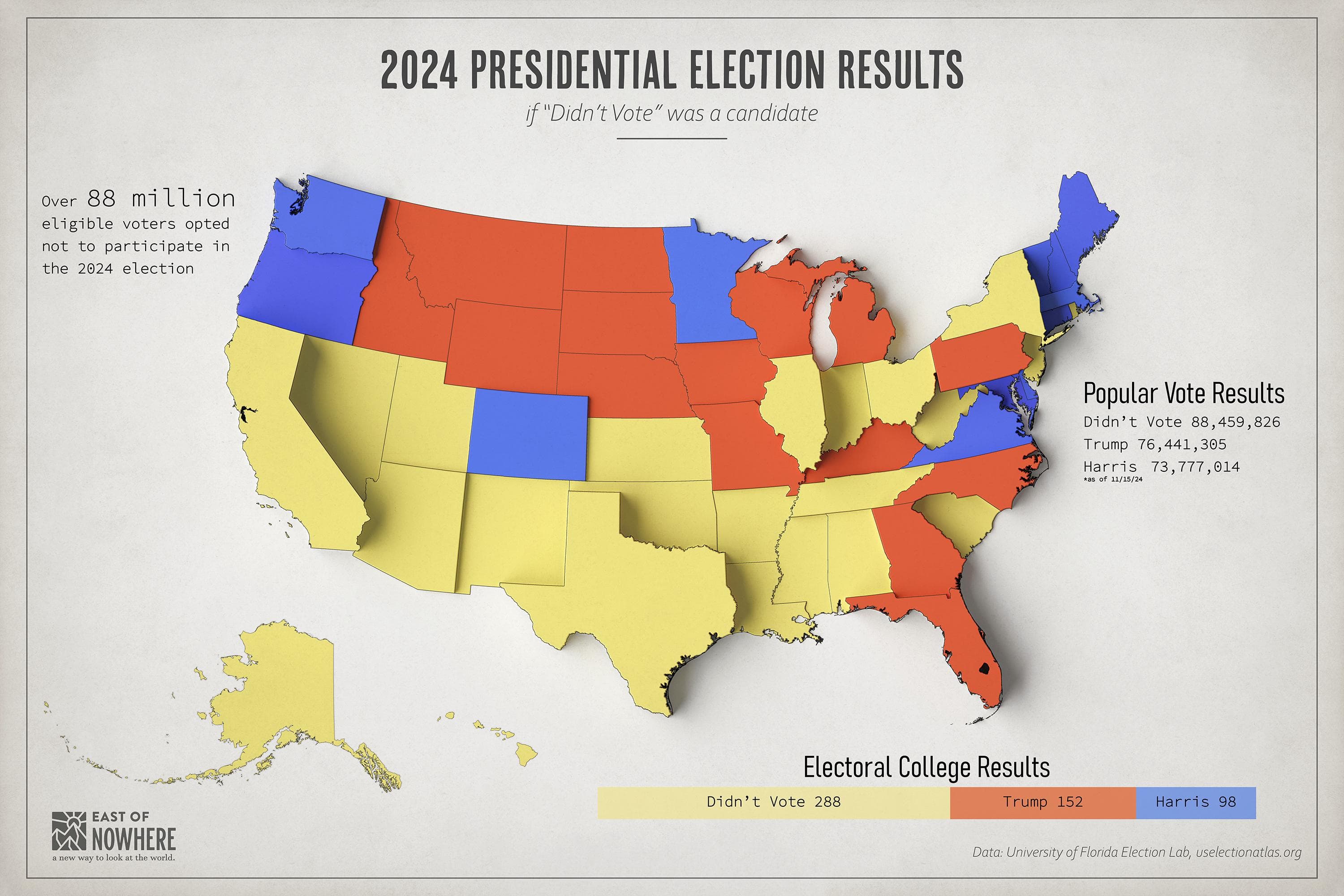cross-posted from: https://lemmy.ml/post/22680392
Thinking of red states vs blue states is busted. Plenty of good visualizations of this over the years, but this election in particular feels really important to point out "We" did not chose this.
When I say we I mean registered US voters, but even less so citizens, and even less so again residents.
Even of the voters who did vote for the GOP candidate, who can say how many really wanted him or his policies vs they just didn't want more of the status quo Dems.
The popular vote tallies in this graphic are out of date too, He definitely didn't win in a landslide the way it can appear with red and blue maps. His win in the popular vote was also pretty small now that more votes have been counted. https://www.thenation.com/.../donald-trump-vote-margin.../
So, what if Biden used broad immunity SCOTUS granted to declare a crisis of democracy - That between massive disinformation campaigns by enemies both foreign and domestic, voter suppression, as well as many other factors, the will of the people can't be discerned from our recent presidential election. That it would be a dereliction of duty both to the people and to his oath to defend the constitution to hand over power to someone whose clear and declared intent is abuse the power of the office to fundamentally reshape or demolish our republic based on this highly suspect and incomplete result (remember, most people didn't even vote)
Here is my off the cuff proposal for what to do after that
A new election, everyone must vote. Trump and Harris on the ballot, but each major party must offer 2 candidates, and we're using Ranked Choice Voting. 1st place gets presidency, 2nd place gets VP.
Biden almost certainly won't do anything like this. He is clearly a coward with a stupid sense of optimism - a "things will be just fine, no need for any drastic measures" ever, mentality, and despite some rhetoric has shown no signs that he thinks there is anything to actually be concerned about from the party which has veered hard towards fascism. But, hey, a guy can dream.

This is a completely mandatory assumption for the math to work.
The second there is any selection bias at all it completely falls apart.
central limit theorem also requires the random variables to be independent, which in this case would mean that people’s voting habits are not affected by the voting habits of other people in the sample population. this would start to cause problems for big sample sizes.
That is why you would apply it to each district not the entire county.
if your sample size needs to be small in order to apply the theorem, maybe it is not the best tool for understanding the behavior of the entire population. especially not if the underlying math requires the possibility of growing your sample size to infinity. (this is the “limit” part of the central limit theorem.)
It is obviously true with a 500/1 trillion ratio, but a 100/100,000 is a big difference and that is just the random number I chose the actual ratio is closer to 88/334 (88 million people who didn’t vote. 334 million population)
The 500/1 Trillion in the central limit theorem is the absolutely most optimistic exaggeration to prove a point, but it maintains true to a lesser effect when some variation is introduced.
It doesn't matter. The core, foundational assumption that the entire thing stands on is the selection is completely random.
It does not apply, and cannot provide valid statistical inferences about the target population, if that is not the case. People who chose to vote are not representative of the population as a whole.
I would argue that the people who showed up to vote is a perfectly random selection of people who would have shown up to vote if you extrapolate the numbers out under identical circumstances for each city town district state, etc , I would also concede that the sheer increase in voters would affect who votes, I would not how ever say this alters my conclusion because there is no way to know what way it would alter them making it another random variable.
You would argue incorrectly. That's not what random means.
You cannot use the central limit theorem in any context where the selection of the small sample is not random. It is not applicable.